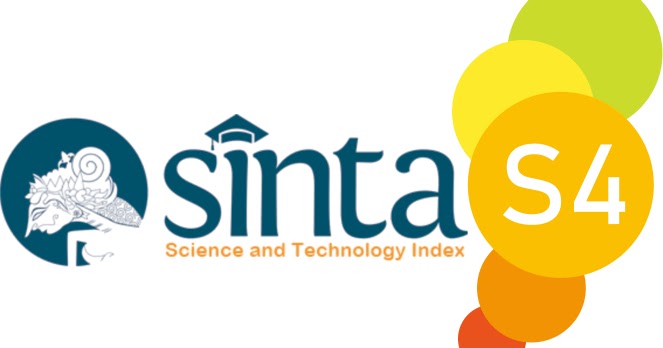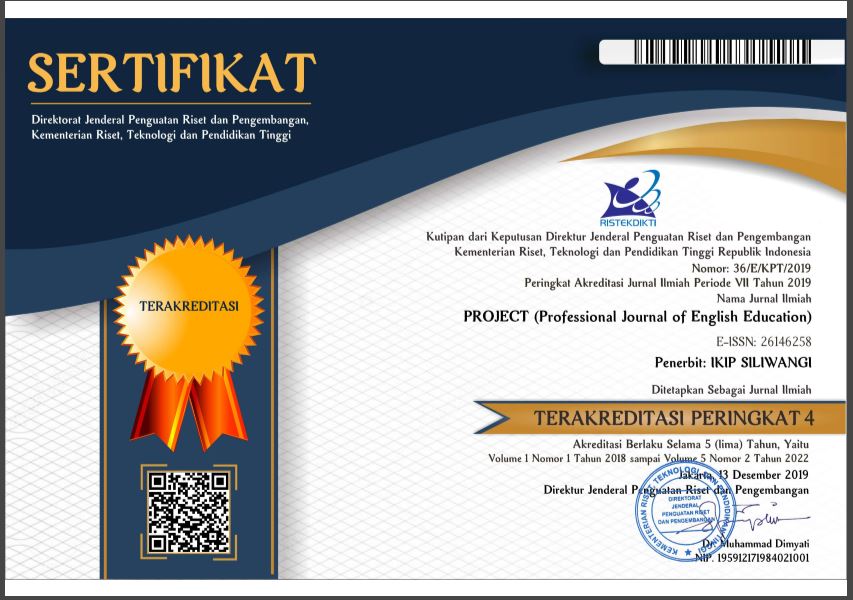Writing Anxiety Among Indonesian EFL Students in Online Discussion Forum
Abstract
In the context of online learning increasingly adopted by an Indonesian higher education institution, students must adapt to new modes of instruction, which may lead to anxiety, particularly in EFL writing through online discussion forums. This study aims to identify and describe the types, levels, and contributing factors of writing anxiety, as well as how students manage their anxiety in online discussion settings. A mixed-methods approach with a concurrent triangulation design was used to understand the phenomenon. Data were collected through questionnaires and interviews with twenty-five first-semester master's students in the English Education Study Program at a private university in Jakarta.The findings revealed that most students experienced moderate anxiety, with cognitive anxiety being the most prevalent type. Contributing factors included linguistic difficulties, fear of negative comments, and time pressure. Furthermore, the study highlights the importance of supportive instructional strategies and self-regulation in reducing writing anxiety among EFL learners in digital contexts.
References
Akmal, D. (2017). Impact of Web Based Learning on EFL: Using On-line Discussion Forum (ODF) to Enhance Students’ Writing Skill. Universal Journal of Educational Research, 5(8), 1345–1348. https://doi.org/10.13189/ujer.2017.050807
Alzahrani, E., & Alshaikhi, A. (2023). Exploring Writing Test Anxiety Among EFL University Students in the Saudi Context. International Journal of English Language Education, 11(2), 1. https://doi.org/10.5296/ijele.v11i2.21044
Cheng, Y. S. (2004). A measure of second language writing anxiety: Scale development and preliminary validation. Journal of Second Language Writing, 13(4), 313–335. https://doi.org/10.1016/j.jslw.2004.07.001
Coman, C., Țîru, L. G., Meseșan-Schmitz, L., Stanciu, C., & Bularca, M. C. (2020). Online teaching and learning in higher education during the coronavirus pandemic: Students’ perspective. Sustainability (Switzerland), 12(24), 1–22. https://doi.org/10.3390/su122410367
Creswell, J. W., & Creswell, J. D. (2018). Research Defign: Qualitative, Quantitative, and Mixed M ethods Approaches (Third Edit). https://www.ucg.ac.me/skladiste/blog_609332/objava_105202/fajlovi/Creswell.pdf
David, A. R., Azman, H., & Siew Ming, T. (2018). Investigating Online Dialogue Journal Writing Impacts on Low Proficiency Students’ Writing Anxiety. International Journal of Language Education and Applied Linguistics, 08(2), 71–81. https://doi.org/10.15282/ijleal.v8.1051
Griffin, L., & Roy, J. (2022). A great resource that should be utilised more, but also a place of anxiety: student perspectives on using an online discussion forum. Open Learning, 37(3), 235–250. https://doi.org/10.1080/02680513.2019.1644159
Hapsari, C. T. (2017). Distance learning in the time of Covid-19: Exploring students’ anxiety. Journal of English Language Teaching, 6(1), 40–49. https://doi.org/DOI: https://doi.org/10.15294/elt.v10i1.45756
Horwitz, E. K. (2001). Horwitz (2001) Language anxiety and achievement. Annual Review of Applied Linguistics, 21, 112–126. https://doi.org/DOI: 10.1017/S0267190501000071
Kondo, S., & Ying-Ling, Y. (2004). Strategies for coping with language anxiety: The case of students of English in Japan. ELT Journal, 58(3), 258–265. https://doi.org/10.1093/elt/58.3.258
Kusumaningputri, R., Ningsih, A., & Wisasonko, W. (2018). Second Language Writing Anxiety of Indonesian EFL Students. Lingua Cultura, 12(4), 357. https://doi.org/10.21512/lc.v12i4.4268
Nguyen, T. (2015). The Effectiveness of Online Learning: Beyond No Significant Difference and Future Horizons. MERLOT Journal of Online Learning and Teaching, 11(2), 309–319.
Nugraheni, D. A. (2023). Mapping Undergraduate EFL Students’ Writing Anxiety: Trajectories from Responses, Reasons, and Strategies. Jo-ELT (Journal of English Language Teaching) Fakultas Pendidikan Bahasa & Seni Prodi Pendidikan Bahasa Inggris IKIP, 10(2), 251. https://doi.org/10.33394/jo-elt.v10i2.9452
Onyema, E. M., Deborah, E. C., Alsayed, A. O., Naveed, Q. N., & Sanober, S. (2019). Online Discussion Forum as a Tool for Interactive Learning and Communication. International Journal of Recent Technology and Engineering (IJRTE), 8(4), 4852–4868. https://doi.org/10.35940/ijrte.d8062.118419
Pasaribu, T. A., & Dewi, N. (2021). Indonesian EFL Students’ Voices on Online Learning During COVID-19 Through Appraisal Analysis. Language Education and Acquisition Research Network, 0672(June), 1–28.
Quvanch, Z., & Kew, S. N. (2022). Evaluating Afghanistan University students’ writing anxiety in English class: An empirical research. Cogent Education, 9(1), 1–26. https://doi.org/10.1080/2331186X.2022.2040697
Rezaei, M., & Jafari, M. (2014). Investigating the Levels, Types, and Causes of Writing Anxiety among Iranian EFL Students: A Mixed Method Design Maliheh. Procedia - Social and Behavioral Sciences, 98, 1545–1554. https://doi.org/10.1016/j.sbspro.2014.03.577
Sagara, J. B. (2020). An Investigation of EFL Students’ Anxiety towards Online English Learning in Paragraph based Writing Subject. Concept : Community Concern for English Pedagogy and Teaching, 6(1), 26–37. https://doi.org/10.32534/jconcept.v6i1.1393
Wahyuni, D., Oktavia, W., & Marlina, L. (2019). Writing Anxiety among Indonesian EFL College Students: Levels, Causes, and Coping Strategies. Lingua Cultura, 13(1), 67. https://doi.org/10.21512/lc.v13i1.5239
Wahyuni, S., & Umam, M. K. (2017). An analysis on writing anxiety of Indonesian Efl. JEELS (Journal of Egnlish Education and Linguistics Studies), 4(1), 103–126. https://doi.org/DOI: 10.30762/jeels.v4i1.333
Zainuddin, Z., & Keumala, C. M. (2018). Hybrid education in HEI in Indonesia.pdf. 6(2), 69–77. http://journal.um.ac.id/index.php/jph
Downloads
Published
Issue
Section
License

This work is licensed under a Creative Commons Attribution-ShareAlike 4.0 International License.




